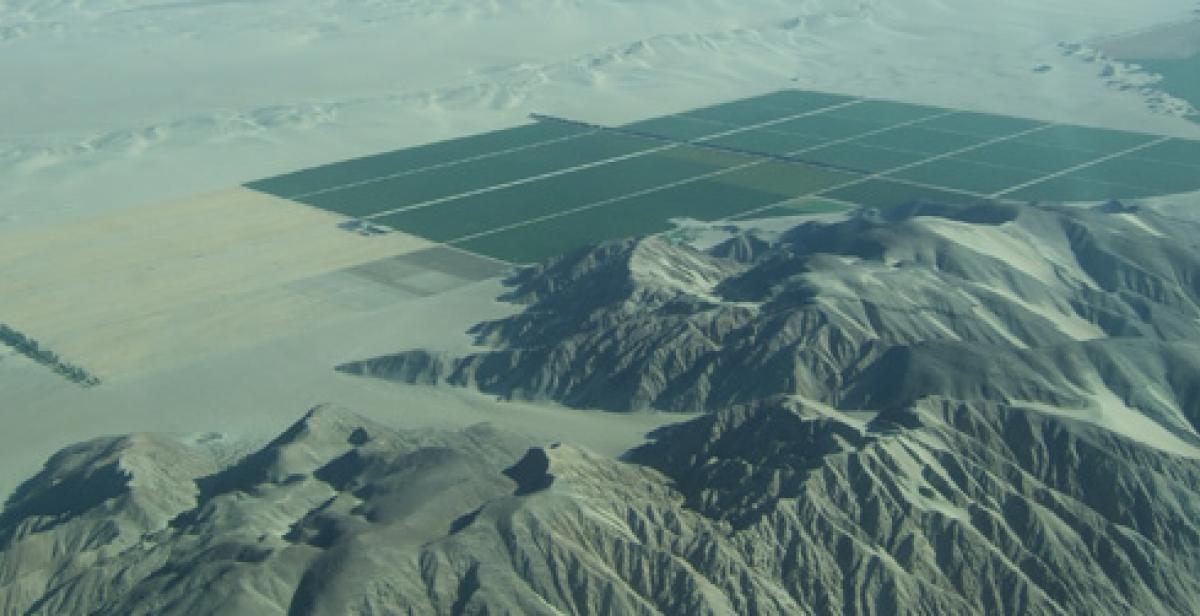When you went to the shop last, you might have thought about your carbon footprint when choosing between different products. But did you think about your water footprint?
It’s not surprising if you didn’t. There’s no label to help you choose what to buy which lets you know the water content of whatever you picked up from the shelf. But don’t mistake that for lack of concern.
Water access is increasingly seen as a problem for businesses and lots of work is happening behind the scenes to address this, not the least in the context of climate change which can make water access difficulties worse. As a result, an increasing number of corporations are starting to look into their water footprint - measuring how much water they use in the production process as a whole.
As this information gets publicly available it will get easier to understand how much water a particular product requires. For example, vegetables need water to grow, for washing, and other stages in the production process before it reaches your supermarket shelf.
But there’s a drawback with looking at the water footprint alone. It doesn’t take the whole story into account, since it doesn’t automatically recognise that the water used is a shared natural resource which exists in very different contexts. For example, if a tomato is grown where there is an abundance of water, it might not matter if growing it uses a lot of water.
But if a tomato is grown in a dry area, this water might have been diverted away from other users (such as washing and cooking by local people), no matter how efficient the water usage is. This is particularly relevant in poor countries where water regulation can be weak and where poor communities often have little influence on local politics and decision-making.
So it’s essential that we don’t just look at the water footprint alone, but that we also look at the impact of this water usage. And if we haven’t done this vital step, it’s unlikely that any statement or label measuring the water footprint will be helpful for businesses or consumers, let alone for the poor and vulnerable communities in areas where the food we eat is grown.
Let’s take the case of asparagus. Most asparagus imported into the UK comes from a desert area in Peru. The constant sun and lack of rain means that asparagus can be grown year round, with the help of sophisticated drip irrigation systems which take water from the aquifer deep underground.
Supported by international investment, the asparagus industry has grown strongly in the last ten years. This growth has also brought increased scrutiny of the production processes: there are now a number of different standards and certification schemes that the industry has to comply with to sell their asparagus on the international market.
Yet, as a recent report by Progressio reveals, the aquifer is draining at an alarming rate, threatening the viability of the whole area. Today local communities are seeing their access to drinking water highly restricted, and many people only have access for a few hours a day or even a few hours per week. Small and medium scale farmers are also bearing the brunt of this water scarcity, struggling to afford the cost of digging deeper and deeper wells. Instead they relying on water diverted from the Andean mountains above.
And therein lies another complication. Diverting more water from the mountains to solve the water crisis in the valley below simply shifts the problem. Some of the poorest people in Peru inhabit these mountains, mostly alpaca herders. They say that the diversion of water is damaging their ecosystem, making alpaca farming increasingly difficult. This problem is compounded by the impact of climate change, adding to their vulnerability.
So, what is the answer? It is clear that much of the answer lies locally. Stronger regulation is essential to ensure more involvement of poor communities to make sure everyone’s viewpoint is properly accounted for. There is a role for science, too, to ensure we get the facts right.
And as buyers of asparagus (or other products with a high water impact) we have a role and responsibility too. Certification and other standards for other goods have increased transparency and made big improvements in how we produce things, for example, around labour standards. Now we need to do the same thing with water.
A process has already started through the Alliance for Water Stewardship. It seeks to develop global water standards which provide guidance for managing and using water in a way that balances social and economic development with environmental sustainability. This will be complemented with a certification process. It’s an effort that needs to be supported and many key stakeholders are already onboard.
It is not an easy task, but it is essential. With a clear steer on the water impacts of different products, we consumers will be able to make confident, informed decisions when standing at our supermarket shelves. And more importantly, poor communities around the world will be able to hang on to more of their precious water.
--
Petra Kjell is Progressio’s Environmental Advocacy Officer
This article also appeared on Fair Food International’s website
For more on food, check out their latest campaign
Progressio’s report: ‘Drop by drop: Understanding the impacts of the UK's water footprint through a case study of Peruvian asparagus’
Alliance for Water Stewardship



